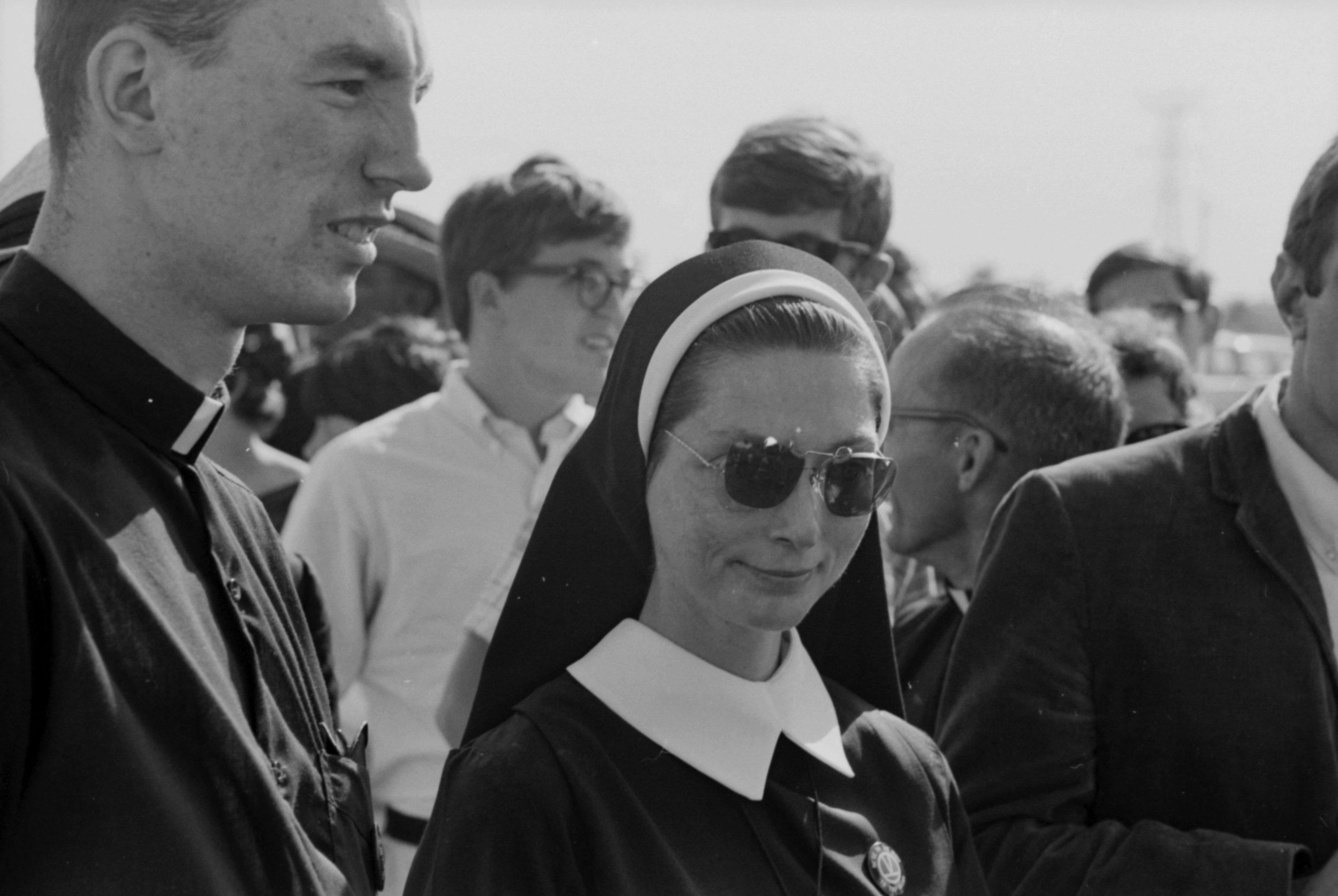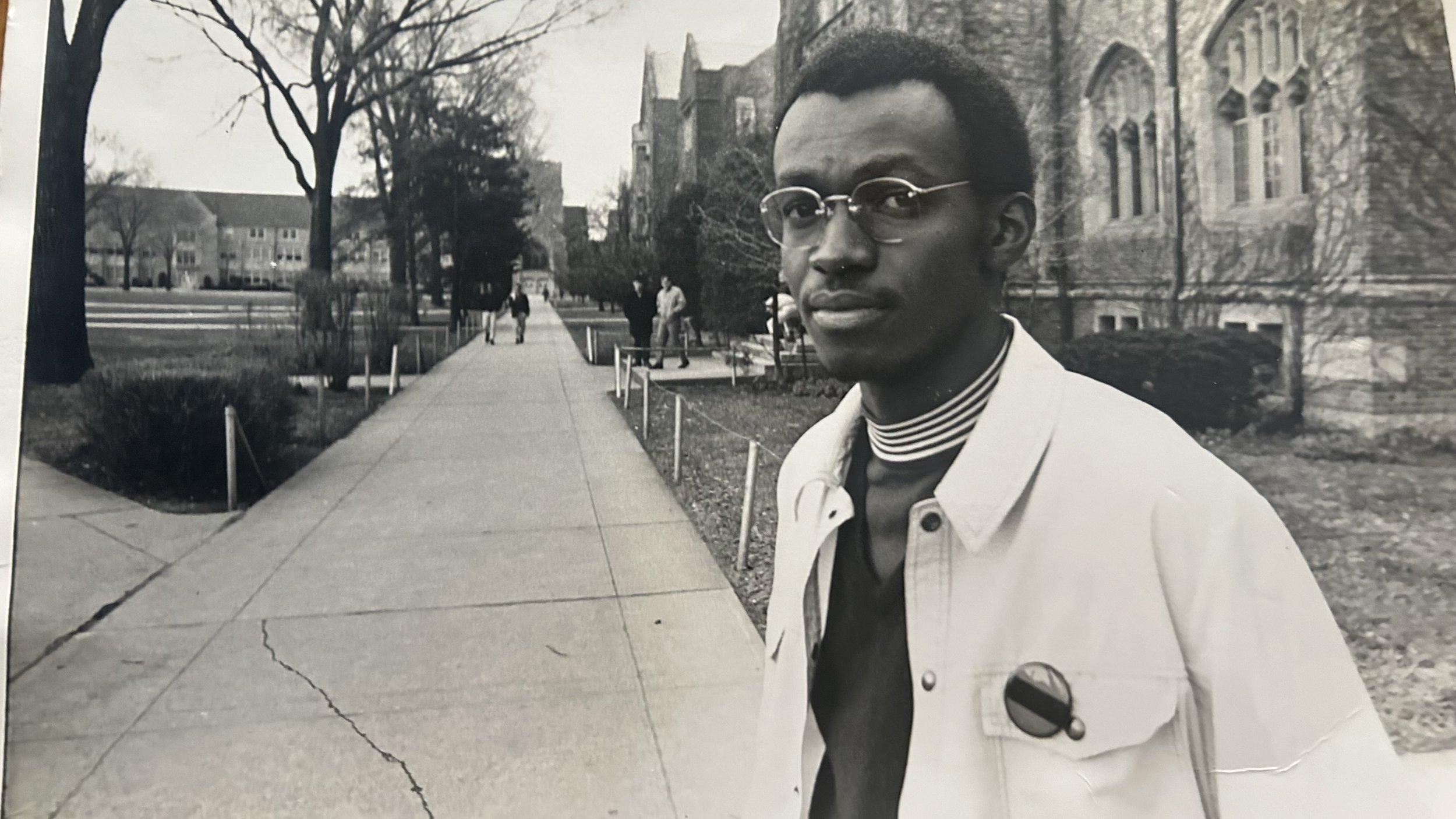learn the
History
“An Exception to the Rule”
(Chicago 1966)
-
Mostly yes! Let’s call it historical fiction. A creative framing device here, some liberties taken with the details there. “Mom” and “El” are fictional characters, but the story is based on real people and real events.
-
They sure did. Most white Catholics either supported segregation or refused to pay the cost required to dismantle it. You can read more about them in my (Matthew’s) article “Real, Good, and Sincere Catholics.”
-
Yup! It’s where King’s Southern Christian Leadership Conference chose to expand their fight for civil rights into the urban North. They joined forces with folks who’d been at this work for years, like the Coordinating Council of Community Organizations. You can read more about this “Selma of the North” in The Chicago Freedom Movement, edited by Mary Lou Finley, Bernard Layfette Jr., James R. Ralph Jr., and Pam Smith.
-
Some like Sister Angelica did, yes. But remember, she was an exception to the rule. You can learn more about her in our (Judith and Jennifer’s) article, “The Nun Hit by a Brick.” You should also read about pioneering Black sisters who preceded her like Sr. Mary Antona Ebo, not to mention the racism they faced from their white peers, in Dr. Shannen Dee Williams’s book Subversive Habits.
“What Are You Going to Do?”
(Charleston 2023)
-
It sure is! Now, this is a webcomic, so we did have a little fun with it. Notre Dame men weren’t brain-munching zombies. And student activism wasn’t shot like a sports movie. But the details are all historically accurate.
-
Surprising as that may seem, yes. It was not that long ago that segregation, disenfranchisement, and outright theft was the law of the land. Arthur was 17 when the Civil Rights Act passed in 1964. He is 77 years young today (2024). To learn more about what the Catholic Church did and did not do to combat Jim Crow, read Mark Newman’s Desegregating Dixie.
-
Not only that, they threatened a sit-in on the basketball court when UCLA’s Kareem Abdul-Jabbar (then Lew Alicindor) came to town. The Afro-American Society was part of what Martha Biondi calls “The Black Revolution on Campus.” Student activists embraced Black Power, occupied buildings, birthed the first Black Studies program, and forever changed American higher education.
-
Our story gives you a glimpse of what it was like in the 1960s. But you don’t have to take our word for it! Check out Don Wycliff and David Krashna’s edited volume, Black Domers: African-American Students at Notre Dame in Their Own Words. (You can read Arthur’s chapter here for $FREE.99.) And you should tune into Black@ND on YouTube to hear what it’s like today.

Sister Angelica at open-housing march Chicago, 1966. (Declan Haun/Chicago History Museum)

Arthur on Notre Dame campus in 1968. (Courtesy Arthur McFarland)

Counter-protesters overturn a car in 1966. (Jim Klepitsch/Chicago Tribune)

Charleston youth protest segregation in 1963. (Avery Research Center)
changing
History?
-
Actually, by many measures things are worse today than they’ve been in decades. Despite the fact that attitudes have shifted, deep racial inequality remains. Our schools are disparately funded. Segregation is getting worse. The wealth gap has widened. Health disparities are abysmal. And efforts are underway to keep you from learning any of this!
-
Fr. Bryan Massingale wrote the book on racial justice and the Catholic Church. Like, literally. So that’s a great place to start. You should also check out Olga Segura’s Birth of a Movement: Black Lives Matter and the Catholic Church and Dan Horan, OFM’s A White Catholic’s Guide to Racism and Privilege. If you’d prefer a podcast, you could add The Gloria Purvis Podcast to your listening list. She insists that a consistent ethic of life for Catholics in the world today must include racial justice.
-
First you should see if there are folks in your own community engaged in this work already. There are a number of national networks of religious communities coming together to make a more just and equitable world. You could join them! A number of Catholic institutions and organizations are wrestling with the legacies of racism and colonialism in our own communities. You could support them! And if there isn’t a justice ministry in your parish, or a community organization in your town, you could be the exception and start one!